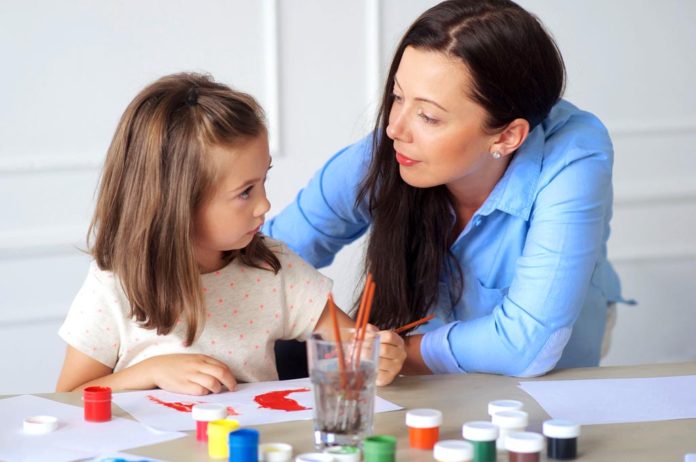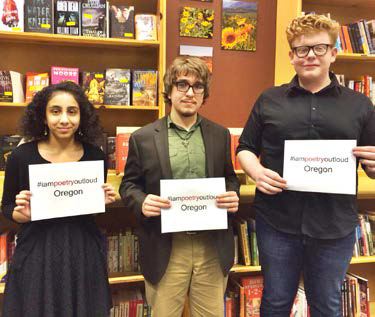 We will make lots and lots of mistakes as parents. Our children will as well. But the good news is that mistakes really are wonderful opportunities to learn and grow, for both us and our kids. As long as we are willing to hug, forgive, and figure out a better way, we can grow closer. However, many adults may not be aware of the mistakes they are making. They may not realize that shaming a child may stop the behavior (at least for the moment), but it doesn’t help get the child to become a capable, confident child with valuable life skills.
We will make lots and lots of mistakes as parents. Our children will as well. But the good news is that mistakes really are wonderful opportunities to learn and grow, for both us and our kids. As long as we are willing to hug, forgive, and figure out a better way, we can grow closer. However, many adults may not be aware of the mistakes they are making. They may not realize that shaming a child may stop the behavior (at least for the moment), but it doesn’t help get the child to become a capable, confident child with valuable life skills.
Mistakes are truly opportunities to learn, but first we need to recognize (without shaming ourselves) when we make them. Make sure you are making it safe to make mistakes in your home.
Imagine you come in the kitchen to find a glass of milk tipped over and milk all over. In your exasperated voice you call to your preschooler, “who spilled the milk?” Your child says, “the dog did it.” Well, you know your little 10 lb dog can’t get up onto the kitchen counters. Can you, as the parent, find a way to handle the situation that both solves the spilled milk problem and teaches your child the importance of telling the truth? You could join in and say, “our little dog did it? Did he grow wings and fly up to the counter? Wait, I think I see him up near the ceiling.” Your child smiles and laughs. You smile too and say, “you know I’m just pretending that our dog has wings and can fly, right?” Your child happily admits that he does. You say, “let’s clean up the spilled milk together” knowing there will be opportunities to talk as you work. You say, “Sweetie, were you afraid I would get mad and yell at you about the milk?” Your child’s eyes drop and he nods. You use your warm and gentle voice and say, “I know it’s tempting to blame things on our dog or to make something up that didn’t really happen, but it’s important for you to know that you can tell me the truth, even when you feel scared. Do you know why it’s important to tell the truth?” You’ve just taught your child so many things, one of which is: THIS IS A MISTAKE MAKING FAMILY!
There are some basics of effective communication:
• Constantly be aware of the messages we are sending our children. Sometimes our words and our actions don’t agree. A number of studies, for instance, have shown that saying “I love you” isn’t necessarily the best way to communicate that important message to our children. Saying the words often and meaning them is important, but there are more effective ways to communicate your love to your child.
• Eye contact. Eye contact signals attention. Making eye contact with our children signals to them that they are important, it captures their attention, and increases the effectiveness of our message. Unfortunately, parents tend to make direct eye contact with children most often when we are angry or lecturing them. We sometimes save our most powerful communication for our most negative messages.
• Posture and position. Get down on your child’s level, kneeling, sitting on couch, or bring her up to the counter. You’ve just eliminated the seemingly overpowering difference in size and height. Watch out for signals your posture sends: crossed arms/legs can indicate resistance or hostility. Kids notice everything! If you are verbally encouraging your daughter to share something with you, but your lips are tight and your face is tense, she will be able to read your body language betraying your true feelings.
• Tone of voice. This is probably the most powerful nonverbal tool of all! Children are sensitive to the nuances of this. Often it isn’t what we say, but how we say it. “I can’t help you.” Say it differently each time stressing each word differently and listen to how the meaning changes.
• Facial expression and touch. When you are sad, and a friend gives you a smile and a pat on the back, does it help? The way we look and the ways we use our hands can communicate very effectively without a single word being spoken. Now try saying “I love you” while kneeling in front of your child, looking into his eyes, smiling, touching him. Now the words and nonverbal cues match up and are so powerful.
Another effective tool of communication is the art of active (or reflective) listening. Active listening is the art of observing and listening to feelings, then reflecting them back to the person. It does NOT require that parents agree with children or even completely understand. It does, however, allow children to feel understood- something all people need! It invites the children to feel heard and lets them know it’s okay to feel whatever they feel. Validating a child’s feelings with love and understanding opens the door for real communication and problem solving and works towards building a lifelong trusting relationship. It also provides an opportunity to explore and clarify feelings. Active listening responses make no judgments and open the door for children to go further in exploring their feelings. Like most adults, sometimes all children really need is for someone to listen and understand.
How do we help our children recognize and manage their difficult big feelings? It’s amazing how quickly some children learn that certain emotions aren’t acceptable, that they must be softened or buried. But our feelings don’t just go away on command. They linger in dark corners, waiting to erupt. It is better for both parents and children to find acceptable, positive ways of dealing with feelings, even the difficult ones.
Help your child explore and express their feelings by:
• Invite the child to draw a picture of how the emotion feels. Does it have a color? A sound?
• Ask the child to talk through rather than act out what she is feeling. Since most children are not consciously aware of their feelings, try asking simple yes/no questions about the feelings. ie: “Sounds like you might be feeling hurt and want to get even.” “Are you having a hard time holding your anger inside?” “When you don’t get what you want, does it make you so angry you can hardly stand it?” When you are correct in guessing what their feelings are, children feel validated and experience relief of being understood.
• Ask the child what she notices happening in her body when she gets really angry. Anger triggers physical reactions (adrenaline is released, heart rate and respiration increase, blood vessels expand) Most people feel anger physically. If your child reports her fists clench, or she feels a knot in her stomach, or her face feels hot, you can work together to help her recognize when she’s getting really angry and provide ways to cool off before anger gets out of control.
• Provide an acceptable way to deal with the anger. You might purchase a “bop bag” that a child can punch when angry (but stay nearby to talk through those strong feelings). Perhaps you can suggest they scream into a pillow, run around the block, or jump on a trampoline. Playing with water or Play-Doh can also help vent emotions and restore calm.
• Invite the child to take a cooling off, time out period before acting on her strong emotions. This is effective only if you’ve set up the concept of Positive Time Out or Self Calming Time. YOU may also go to time out to show support or because you need it too.
Lastly, take care of yourself! Parenting is a long journey; be kind to yourself. We all have hard moments and days. Remember to use the oxygen mask on yourself first and foremost. You will be a better parent for it.



















